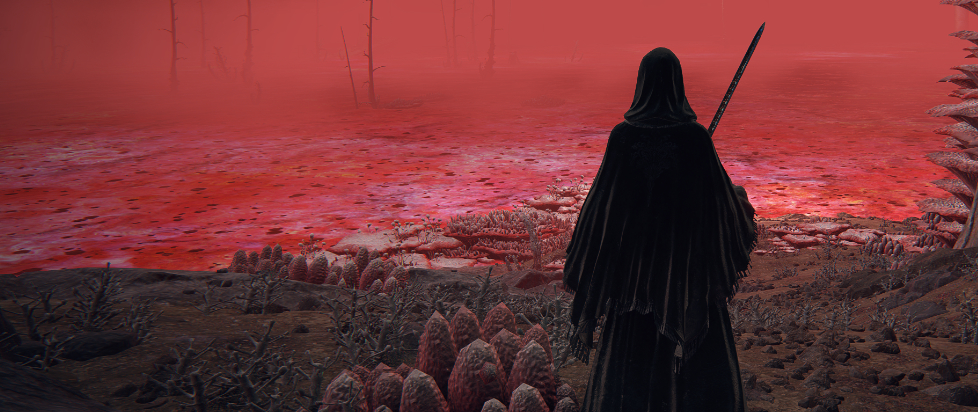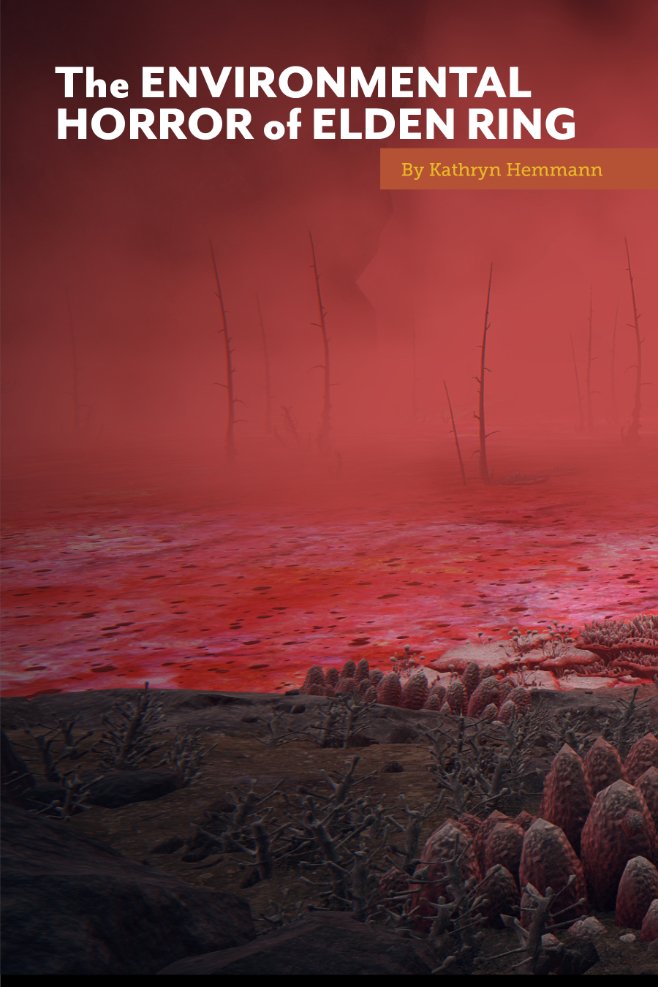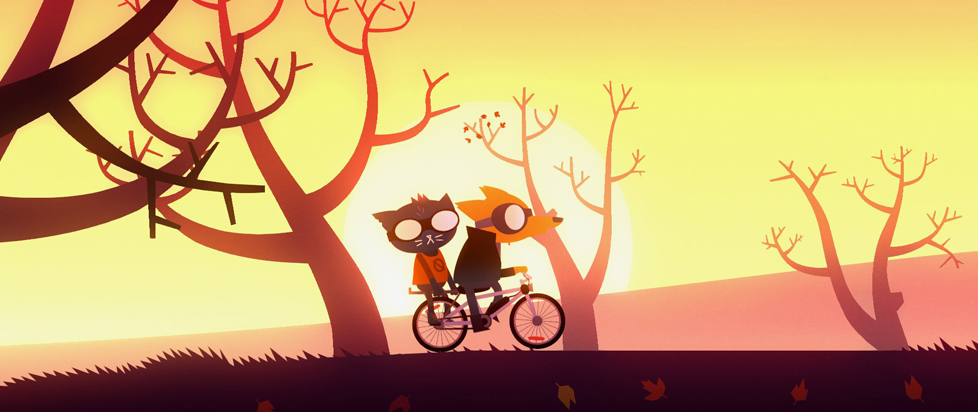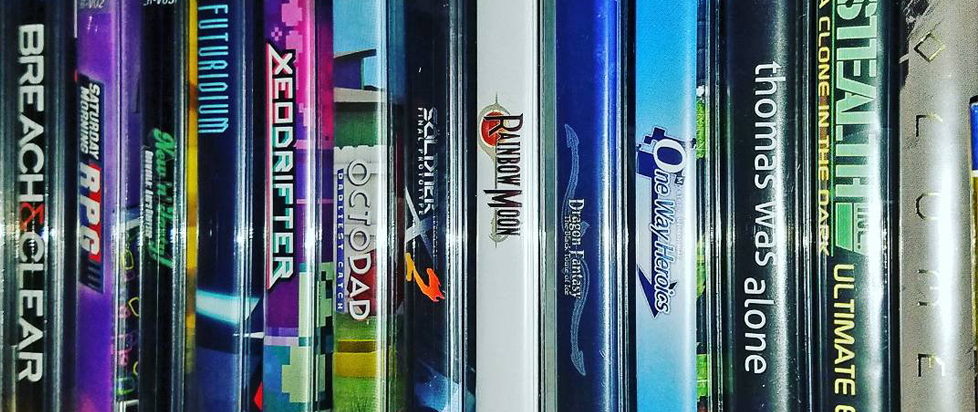
The Environmental Horror of Elden Ring
This is an excerpt from a feature story from Unwinnable Monthly #161. If you like what you see, grab the magazine for less than ten dollars, or subscribe and get all future magazines for half price.
———

Many post-apocalyptic open-world games, such as Breath of the Wild and Horizon Zero Dawn, present the player with a thriving green landscape to explore. Elden Ring, despite the dark tone of its story, initially seems to offer similarly beautiful vistas – until the player arrives in Caelid. The environmental storytelling of Caelid, where a hellish catastrophe is still ongoing, delivers an effective message regarding the destruction of the natural world. Caelid resists the post-apocalyptic fantasy that the detrimental effects of human activity on the environment are temporary and reversible, thereby underscoring Elden Ring’s brutal critique of the abuse of power.
Gary Butterfield of the Bonfireside Chat podcast has called the world of Elden Ring “a postapocalyptic heaven.” When the player first steps out of an underground tomb in the ruined kingdom of Limgrave, the Lands Between certainly seem like paradise. The luminous Erdtree rises above the distant horizon, and its golden leaves flutter delicately on the wind. At the edge of the player’s vision is a forest with a luxuriant canopy. The bushes that surround your tomb are resplendent with flowers and berries. This is still a FromSoftware game, so the NPC who greets your arrival to the Lands Between is a murderous war surgeon in a bloodstained smock, but you may be able to spot a few plump and carefree bunny-squirrels hopping across the field during his cryptic monologue.

As the player progresses along the journey to gather the shards of the Elden Ring, the game presents a series of equally elysian landscapes. Mist rises from a shallow lake at the base of the postcard-perfect Academy of Raya Lucaria. Lush autumnal forests frame the windmills dotting the edges of the Altus Plateau. Ornate pavilions nestle in the boughs of the dying but still grand Haligtree. Between its bouts of intense and punishing ultraviolence, Elden Ring is a quiet and contemplative game that allows the player ample opportunities to study the details of the environment closely. Attentive players are rewarded not only with tactical advantages, but also with hints of story hidden in the ruins.
Before an event called “the Shattering,” which involved the assassination of a prince and the wars that followed, the members of the royal family of the Lands Between were tasked with maintaining the Golden Order of their dynasty. However, the player is presented with numerous pieces of evidence that suggest their enforcement of the Golden Order was far from benevolent. Multiple categories of people were enslaved or otherwise mistreated; and, now that the Golden Order no longer prevails, these people are free to live as they wish. Many players have wondered if perhaps, now that the warlords have perished or fled, the common people might be able to govern themselves as balance is restored to nature.
During the summer following the global outbreak of the Coronavirus pandemic in 2020, the tongue-in-cheek sentiment that “nature is healing” mushroomed across social media platforms. Writing in July 2020 for the online environmental activism magazine Grist, Kate Yoder documents how photos and videos of animals in urban spaces became a meme. This meme quickly devolved into a parody of itself as freshly-minted urban explorers affixed humorous captions to images of the garbage that accumulated while sanitation workers operated on safer pandemic schedules. One of the most widely shared variations of this meme is a photo of a flock of plastic clogs floating on the surface of an unmaintained pool bearing the caption, “Nature is healing; the Crocs are finally returning to the rivers.”

Memes aside, the concept that “nature is healing” stems from the pervasive assumption that the planet’s ecosystem is so large and complex that it will repair itself no matter how great the impact of human activity. In 2007, Alan Weisman captivated readers with his bestselling thought experiment The World Without Us, which describes in fascinating detail how a city like New York or London could return to nature in a matter of months. Mounting concerns over climate change during the 2000s also resulted in a mainstream interest in human extinction theory. This interest was expressed through popular-audience books such as Elizabeth Kolbert’s The Sixth Extinction: An Unnatural History, which won a Pulitzer Prize in 2014. The fantasy presented by these books is that, one day, all that will remain of twenty-first century human civilization is our ceramic coffee mugs.
Meanwhile, the concomitant rise of image-based social media in the mid-2010s created accessible platforms for urban exploration photography, which depicted subjects ranging from abandoned malls in the suburbs of Ohio to abandoned amusement parks in Japan’s depopulated northern Tōhoku region. Photographers in London prowled the streets after dark to document the city’s feral fox population, while photographers in Ukraine hopped barbed-wire fences to document feral hogs and chickens in Chernobyl.
This digital fantasy of a posthuman world has been modeled in numerous videogames, from the overgrown parking lots of Boston in The Last of Us to the ruins of a futuristic city in Nier Automata. Because these environments are mostly devoid of human life, the player can enjoy the scenery with a minimum of distractions. Indie art games have embraced the posthuman aesthetic as well, allowing the player to swim through healthy coral reefs growing over rusted metal in Abzû (2016) or to stroll through a deserted yet still bucolic English village in Everybody’s Gone to the Rapture (2015).
Elden Ring seems as though it offers a similarly stunning walk through a post-apocalyptic nature park – until you get to Caelid. When the player arrives in the region, it’s clear that something is very wrong. The sky is red. The earth is black. Frantic soldiers burn piles of bodies. Fleshy pink fungus has overtaken the buildings, the trees and even a few roaming dragons. Caelid’s ruins suggest that it was once a thriving kingdom, but now it’s little more than a barely-contained disaster. Something bad has happened here.
That “something bad” was a woman named Malenia, a member of the royal family who fought her half-brother Radahn to a standstill. She won the battle by means of the magical equivalent of setting off a nuclear bomb, blasting most of the continent to dust and sand in the process. The forests of Caelid will likely never return, nor will the people and animals who once lived there. In its striking visual ugliness and extreme hostility to the player, Caelid is a viscerally upsetting reminder that the ability of nature to heal itself should not be taken for granted.
———
Kathryn Hemmann writes about social and political issues in Japanese fiction, graphic novels, and video games. Their current research focuses on comparative bioethics relating to the environment. Kathryn teaches at University of Pennsylvania, and they tweet @kathrynthehuman.
You’ve been reading an excerpt from Unwinnable Monthly Issue 161.
To read the article in its entirety, please purchase the issue from the shop or sign up for a subscription to Unwinnable Monthly!




